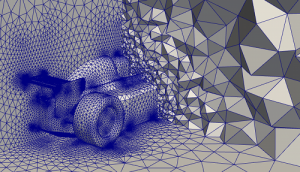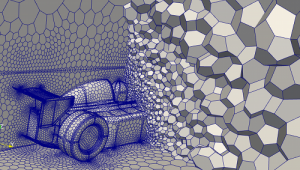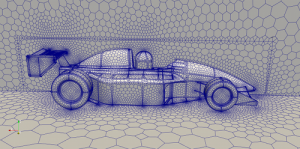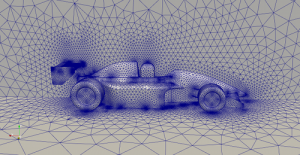Polygon Surface Mesh vs Triangle Surface Mesh
Converting a tetrahedral mesh to a dual mesh will:
Reduce the number of volume elements
Increase the size of each volume element
Increase the number of faces (cell neighbors) per volume element
The increased element size and increased number of neighbors per element proves to be a significant benefit. If you compare the results from a tetrahedral mesh to the results from a dual mesh with the same number of cells, then the dual mesh will in general:
Converge faster with fewer iterations
Converge more reliably to lower residual values
Produce results with higher accuracy
The next release of the Caedium CFD software system will provide an option to automatically convert a RANS Flow volume mesh to a polyhedral mesh – also known as a dual mesh. Solving the RANS equations on the dual mesh compared to the equivalent tetrahedral mesh typically leads to higher accuracy results with both faster and more reliable convergence.
 |
| Polyhedral Volume Mesh Slice |
 |
| Tetrahedral Volume Mesh Slice |
(re-posted from the CAEDIUM blog)



